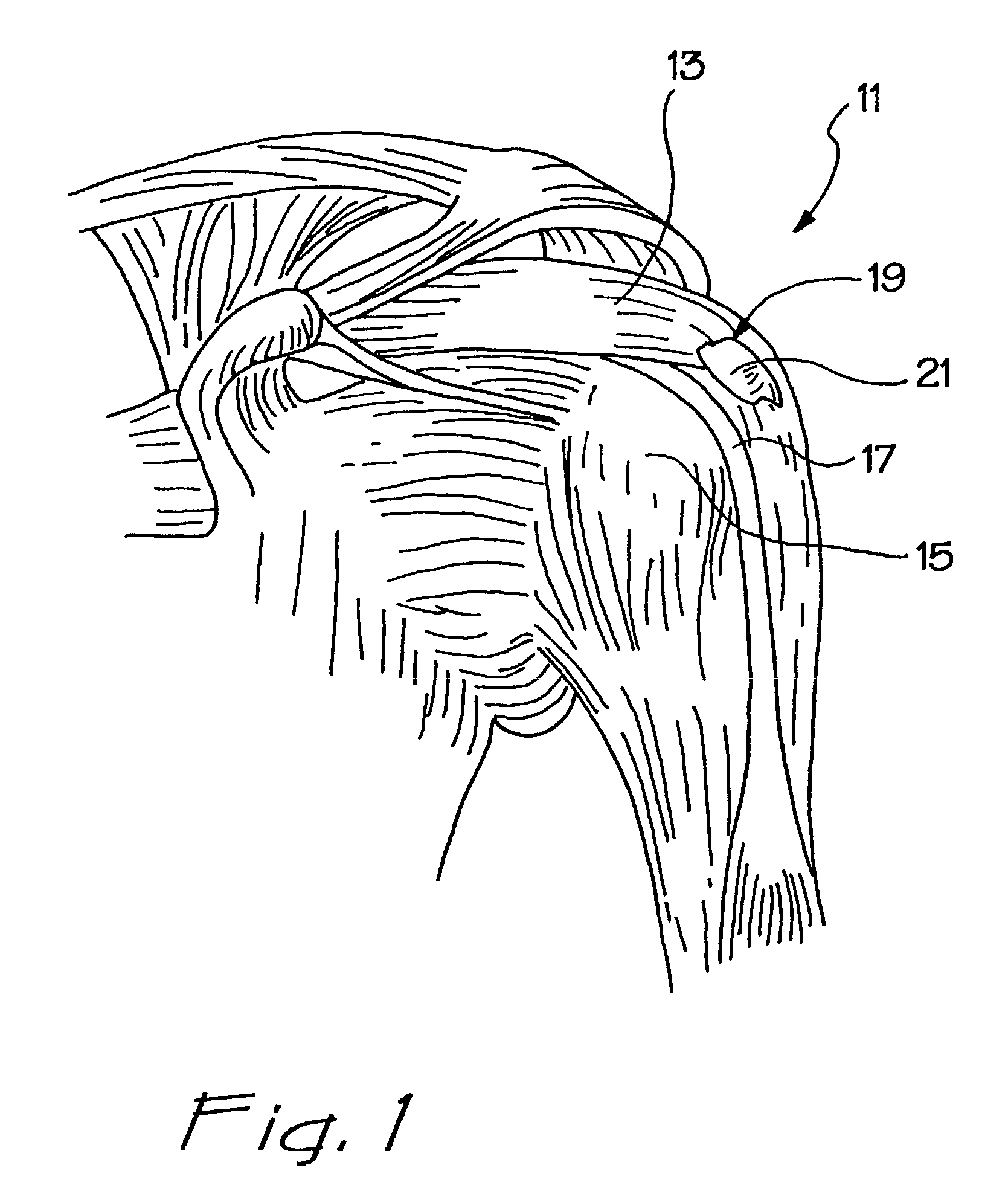Linear suturing apparatus and methods
a linear suturing and cuff technology, applied in the field of methods and devices, can solve the problems of severe limitation, limited mulhollan's instrument, and time-consuming suturing of body tissues
- Summary
- Abstract
- Description
- Claims
- Application Information
AI Technical Summary
Benefits of technology
Problems solved by technology
Method used
Image
Examples
Embodiment Construction
[0074]The present invention relates to a method and apparatus for the arthroscopic repair of torn tissue and bone at a surgical repair site using a device, which is a combination tissue grasper and suture placement device. Although the present invention is described primarily in conjunction with the repair of atom rotator cuff, the apparatus and method could also be used in arthroscopic repair at other sites, such as the knee, elbow, or hip, for example, as well as in conjunction with other surgical techniques, such as traditional open or mini-open surgical procedures.
[0075]Referring now to FIG. 1, there is shown representative shoulder musculature 11, including a supraspinatus muscle 13, a deltoid muscle 15, a biceps tendon 17, a torn rotator cuff 19, and a humeral head 21. The humeral head 21 is not normally visible, as it is typically covered by the rotator cuff 19. However, in the illustration, the torn rotator cuff 19 has pulled away from the head 21 of the humerus, exposing it...
PUM
 Login to View More
Login to View More Abstract
Description
Claims
Application Information
 Login to View More
Login to View More - R&D
- Intellectual Property
- Life Sciences
- Materials
- Tech Scout
- Unparalleled Data Quality
- Higher Quality Content
- 60% Fewer Hallucinations
Browse by: Latest US Patents, China's latest patents, Technical Efficacy Thesaurus, Application Domain, Technology Topic, Popular Technical Reports.
© 2025 PatSnap. All rights reserved.Legal|Privacy policy|Modern Slavery Act Transparency Statement|Sitemap|About US| Contact US: help@patsnap.com



